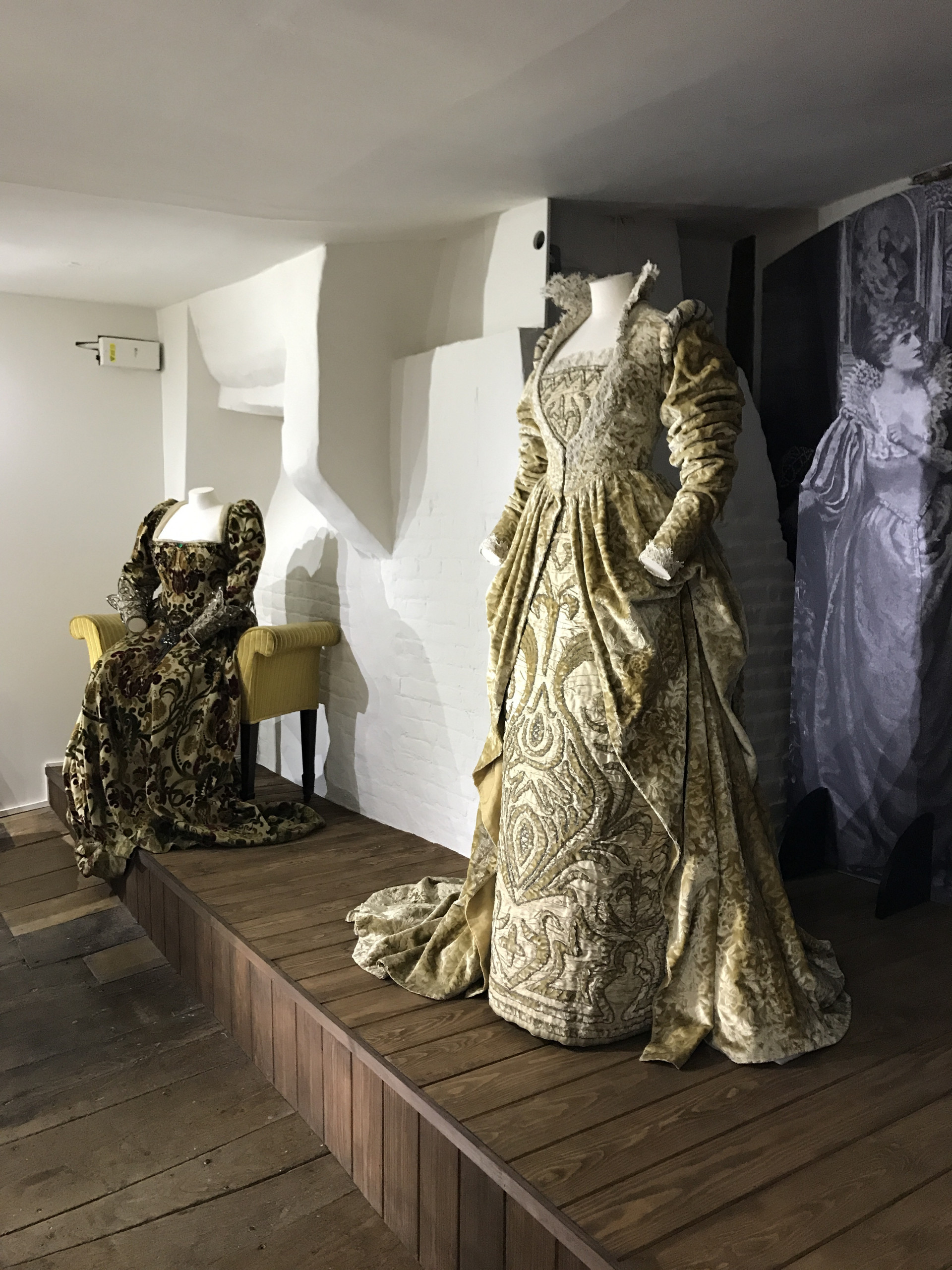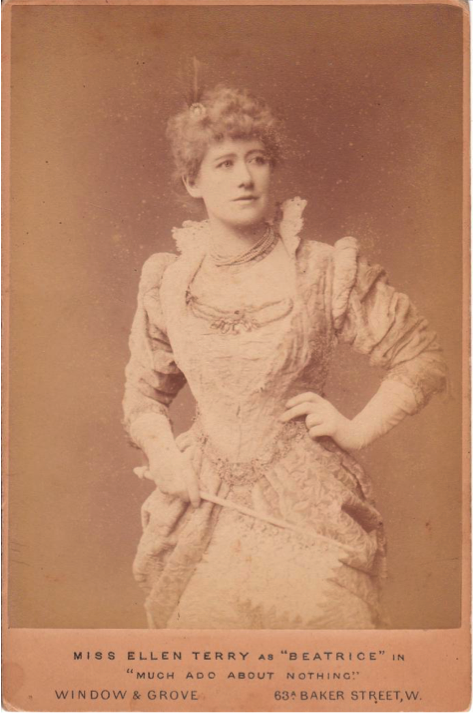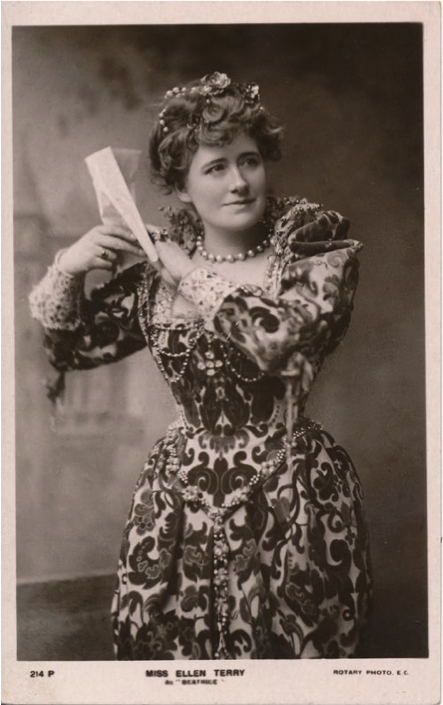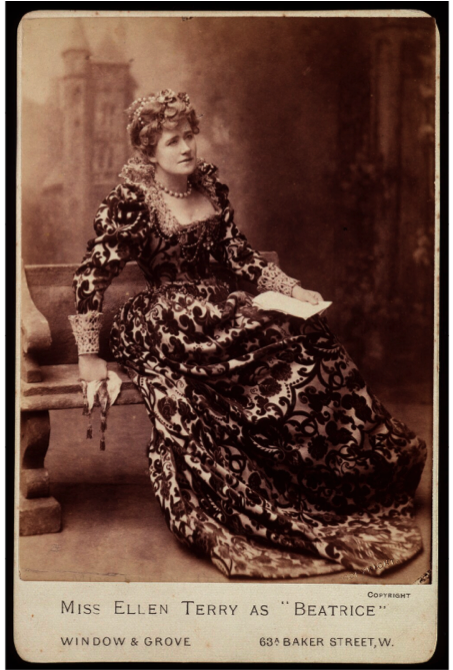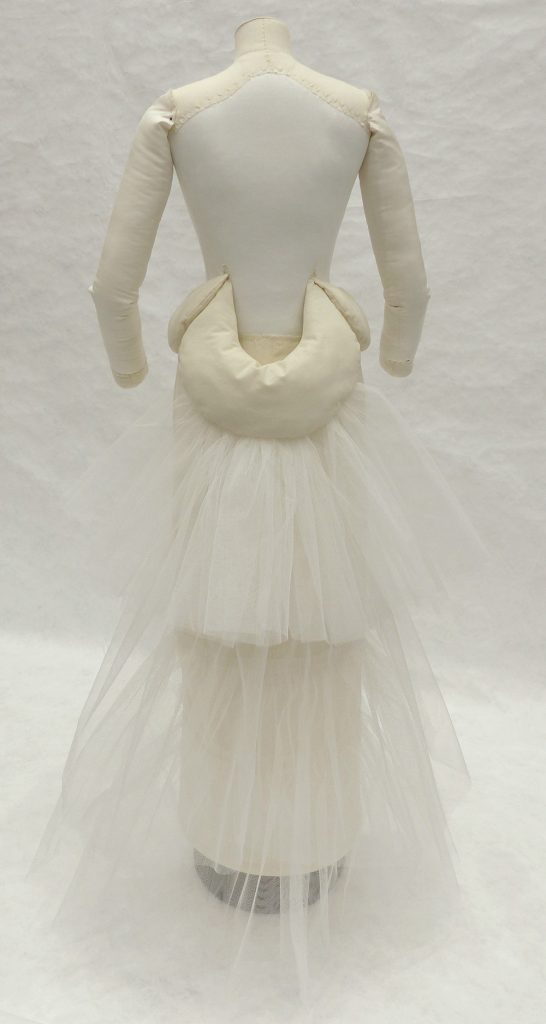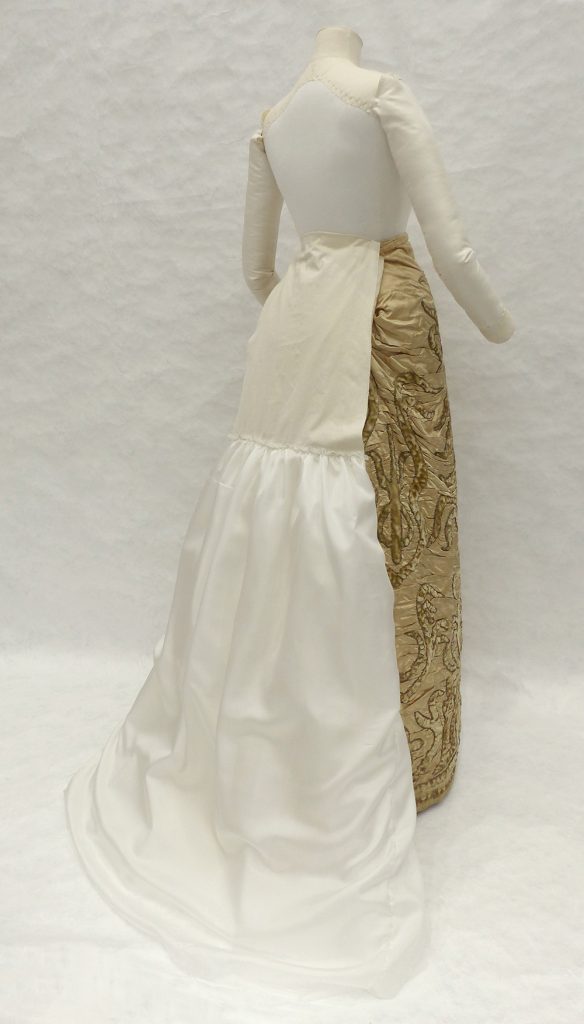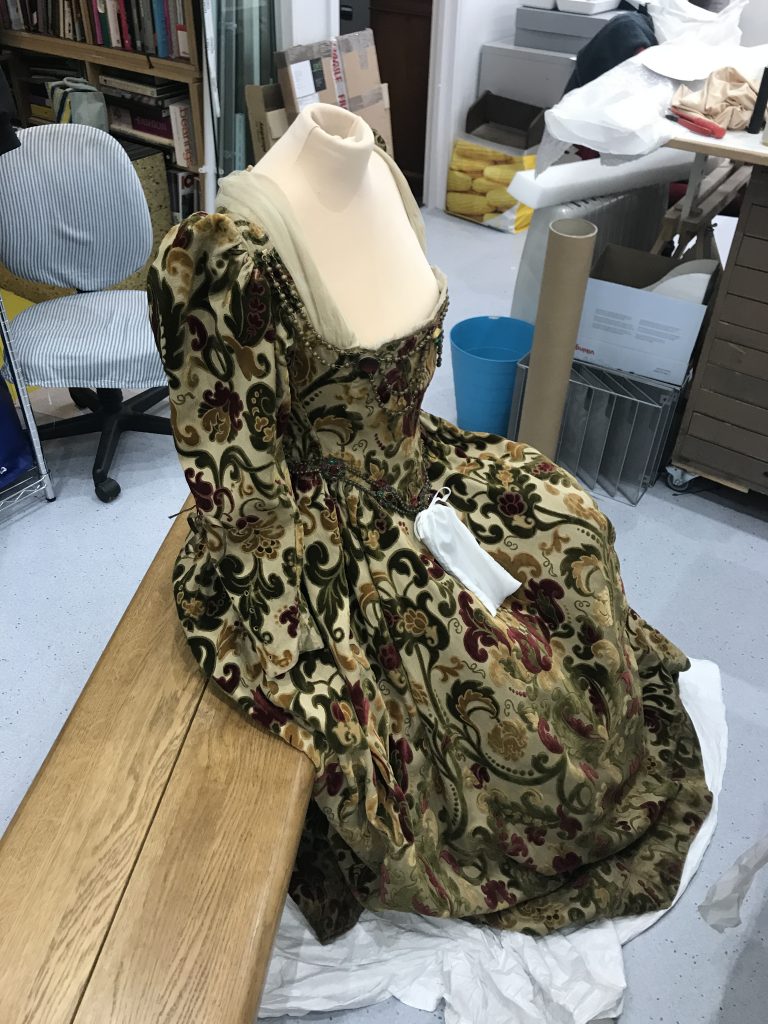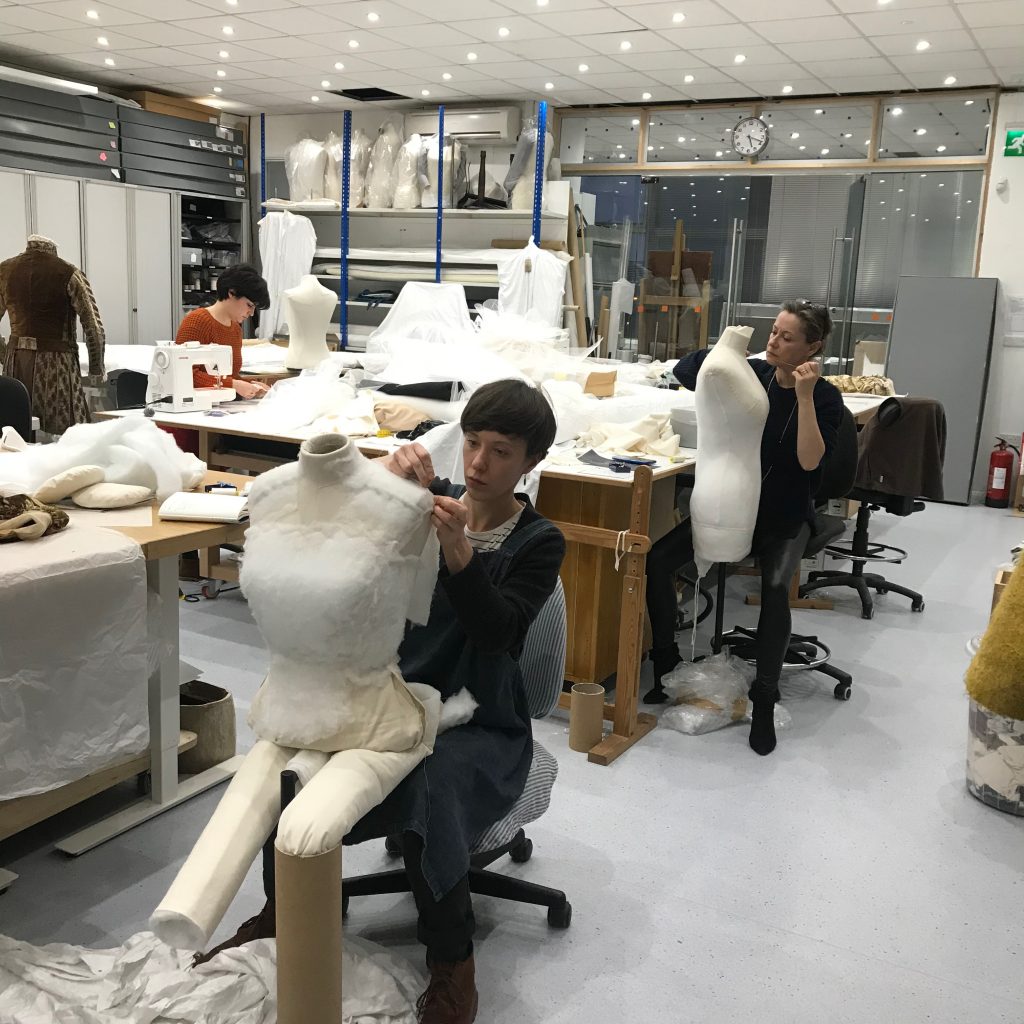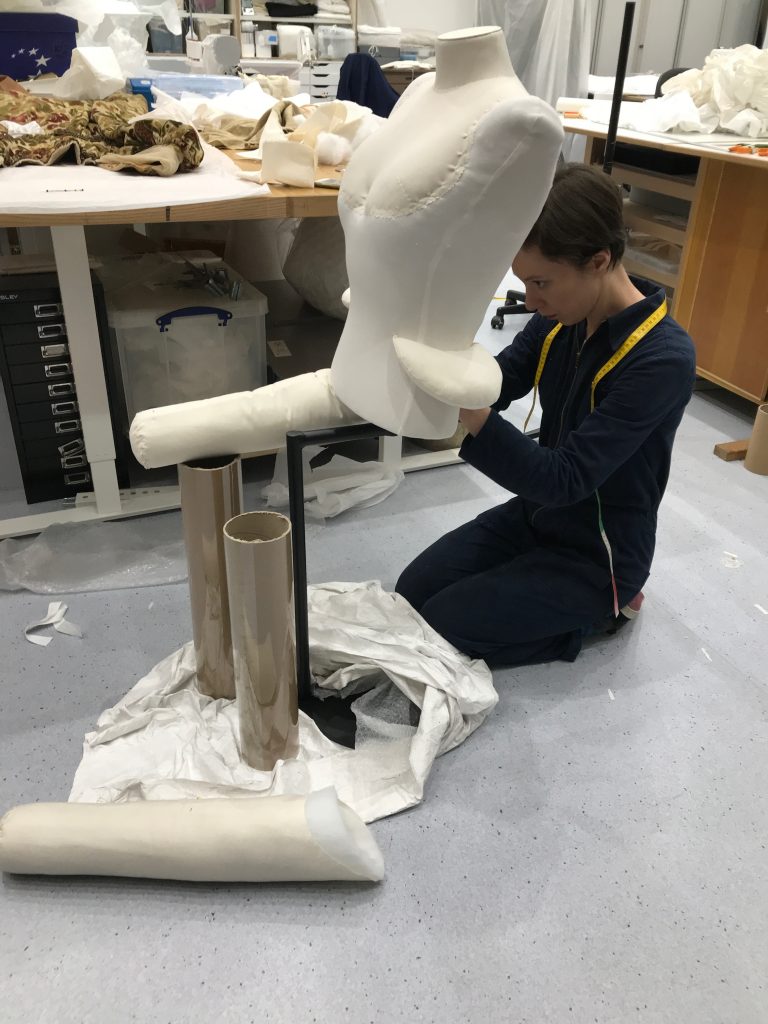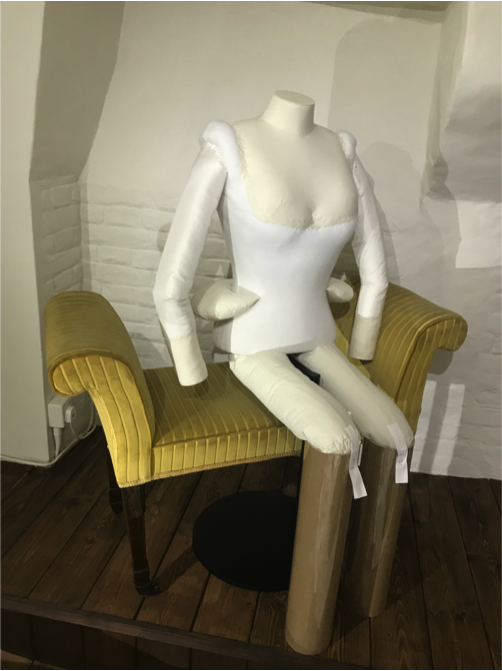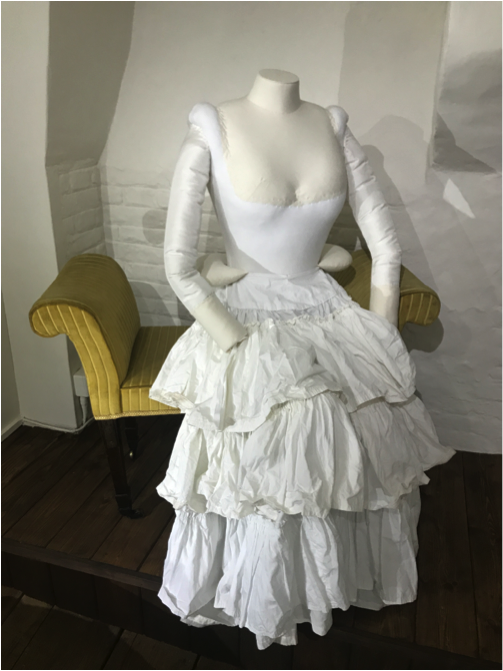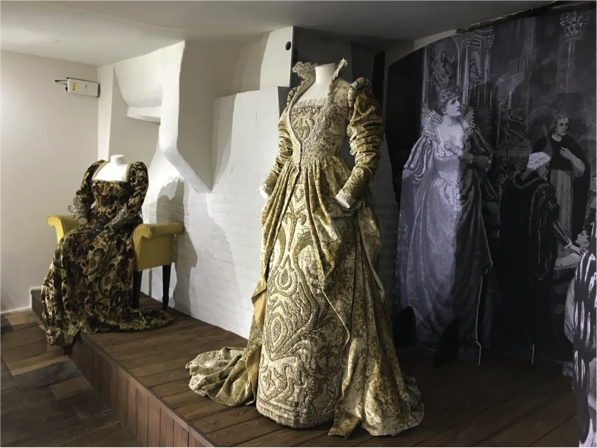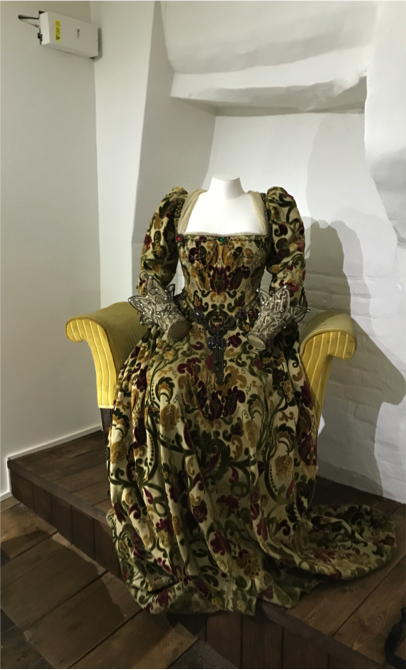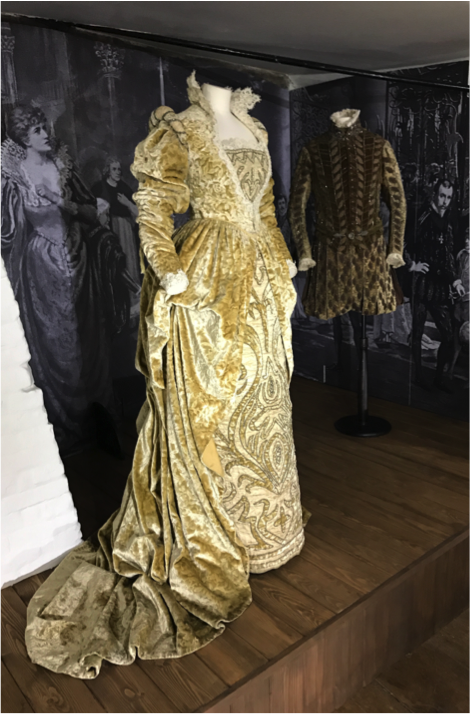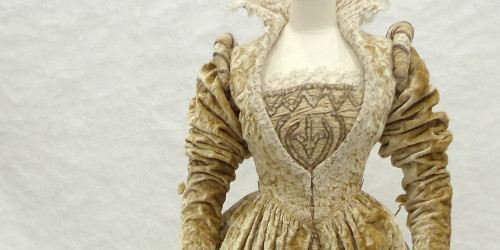
A new display at Smallhythe House, Ellen Terry’s Tudor cottage now in the care of the National Trust, opened just before the whole world stopped because of the pandemic. Even though it has not been possible for visitors to see the new season’s display yet we we would like to share some of our insights into this amazing project.
The display is dedicated to one of the most successful plays performed at the Lyceum Theatre – Shakespeare’s ‘Much Ado About Nothing’ starring Ellen Terry as Beatrice and Henry Irving as Benedick. This was a great opportunity to work on three costumes from the production; two gowns worn by Terry (one from a later production) and a doublet and hose costume worn by Irving. We not only conserved them but also mounted them so that they can be displayed in the Costume Room for visitors to see over the next next few years.
Mounting costume for display is a difficult and very complex task. As conservators, not only do we have to think about the object – it’s condition and requirements, but also about the historical silhouette at the time it was made and the body shape of the wearer. The costume itself provides most of the information needed but sometimes it is not enough. Luckily for us Smallhythe has an amazing collection of contemproary photographs of Ellen Terry wearing her theatrical costumes on stage and in the photographer’s atelier.
The first dress to be mounted was the cream velvet open fronted dress with petticoat and stomacher used in the 1882 production. Although the dress was inspired by Elizabethan period it was clear that we should follow the fashionable silhouette of the late 19th century. A torso mannequin from Proportion London Ltd. was padded to shape using polyester wadding stitched in place and covered with cotton jersey and calico. Arms were made from calico and silk Habotai filled with polyester wadding and stitched in place. The bigger challenge was to create enough support of the correct shape for the lower half of the costume and this we did in two parts.
First a tube petticoat stiffened with Rigilene hoops was made to create the basic shape. Net ruffles were stitched above the hoops to add more volume at the back and then additional hip pads and a bum pad with a net ruffle was made and stitched in position. All these layers were covered with a fine silk Habotai petticoat to prevent any abrasion to the costume from the stiff net. An additional panel was made from a piece of polyester wadding and calico to ensure the correct, flat look to the front of the skirt. To provide support for the train of the gown, an extra panel was created using calico and further nylon net ruffles. This was secured to the back of the mannequin with stitching after the skirt was mounted.
The second costume to be mounted was the polychrome cut velvet gown Beatrice gown. After examination of the object it became apparent that the dress worn by Ellen Terry in the photographs provided by Smallhythe for our reference was very similar but not the same as the one we were about to conserve and mount. It appeared to be made from the same fabric but the placement of the motifs was different. Our best guess is that it is a costume from the 1903 revival production of ‘Much Ado About Nothing’. Another interesting discovery was how differently sized both costumes are – another indication that the polychrome gown was from a later period when Terry became fuller of figure as she aged. We had to go a few sizes up when ordering the mannequin. The NT curatorial team and staff from Smallhythe had suggested a seated position for the dressed mannequin to resemble the pose in one of the reference photographs provided and this proved to be quite a challenging task. As with the other mannequin our starting point was a stockman mannequin from Proportion London Ltd but this time we had to cut off the lower part of it to accommodate the gown in the seated position and to create the right proportions.
We are very lucky to have our studio in New England House in Brighton; a creative hub of small businesses with many talented people close at hand. As for a few previous projects we worked with Mike Penwolf from Panotechnia who made a cantilevered mannequin stand for us. This was designed to support the mannequin hovering just above a “seat” – the mount itself hidden by the costume and with a clever fitting that allowed us to change the angle of the torso. After all the support elements had been adjusted satisfactorily we began with the usual mounting process – first padding the mannequin with polyester wadding and covering it with cotton jersey and calico, then making arms from calico and silk Habotai filled with poly wadding and creating hip pads for better support of the heavy, gathered skirt.
Another problem to solve was the making of legs. Usually when we mount a full length costume we don’t have to think about legs because they are covered by the costume. This time we had to create the impression of legs both for visual effect but more importantly for support of the skirt over the horizontal thigh area of the mannequin. Often the easiest solution is the best. Upper legs were made from a scaled up arm pattern using calico and polyester wadding. Cardboard tubes covered with Melinex® were sturdy enough to take the weight of the skirt and acted as perfect lower legs. The last layer was a very full petticoat, re-purposed from a previous costume display at Smallhythe. After assembling all the elements the seated mannequin was ready to install. Maybe it wasn’t the most elegant of the mannequins prior to dressing but it was a functional one!
The new display is well worth a visit when Smallhythe is finally open again for visitors and makes a welcome change from the previous, ‘Dress in the Limelight’ display of Ellen Terry’s Lady Macbeth beetle wing dress which is now having a welcome rest.
